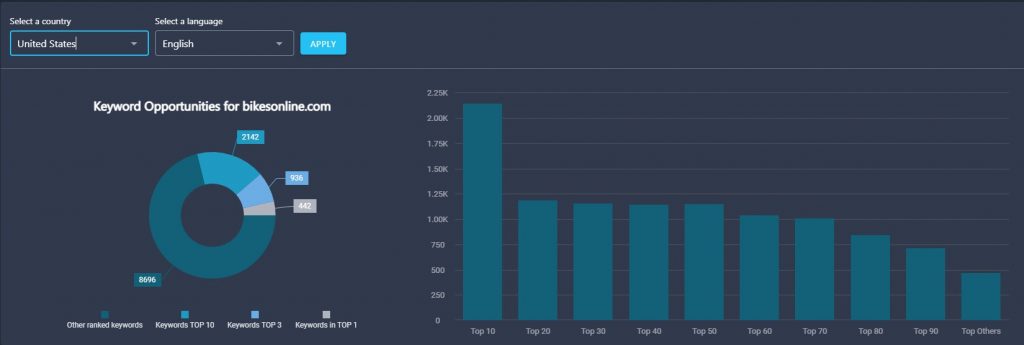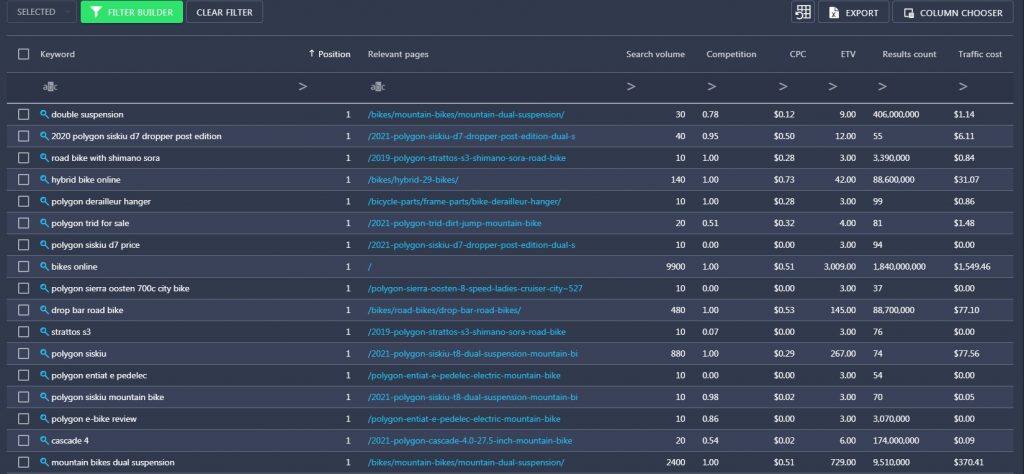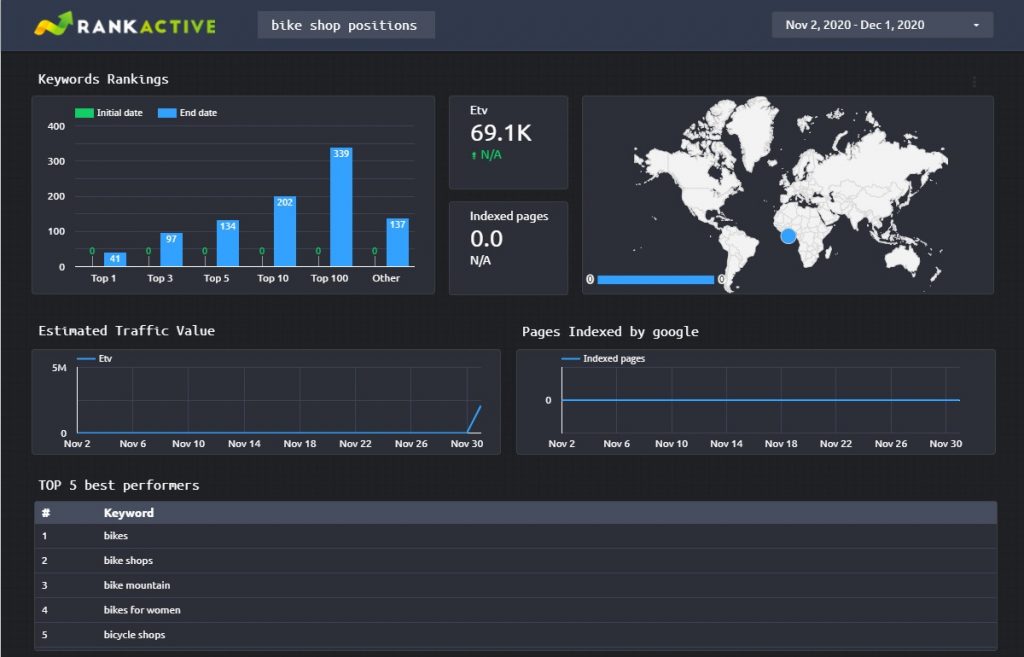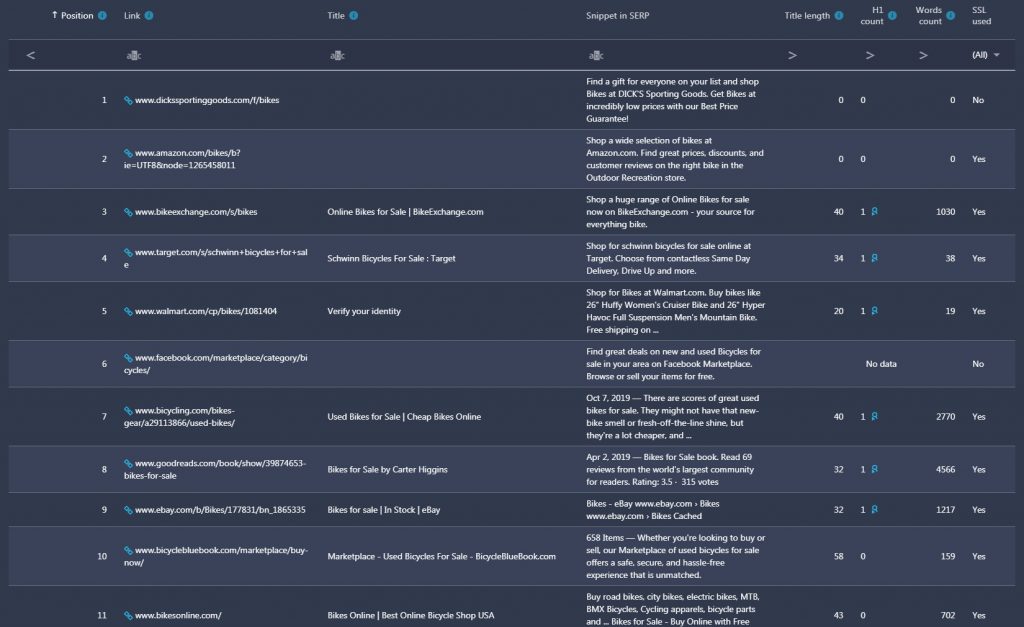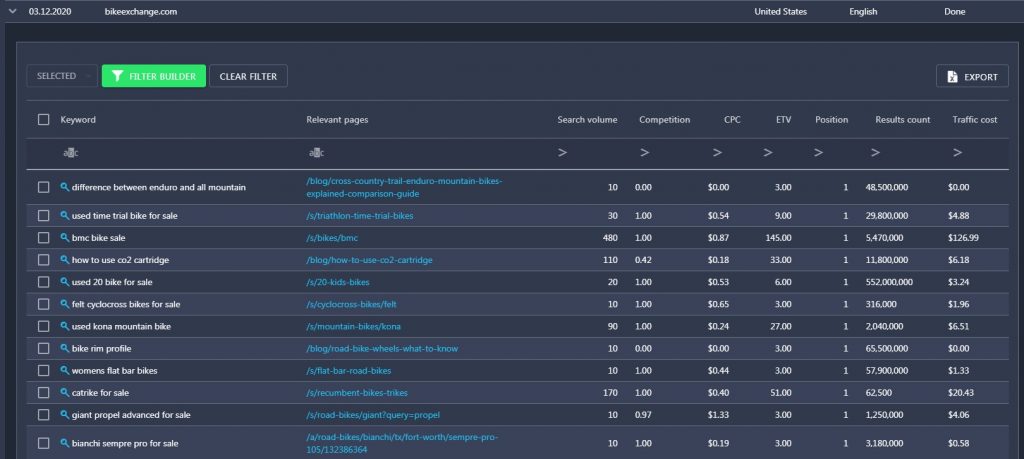What is Reverse Rank Tracking and How it Can Improve Your SEO Audits
4 December 2020 Leave a comment ALL-HANDS SEO
SEO audits are essential. They highlight the strengths and weaknesses of websites, helping us to discover what can be improved. They enable us to build optimization strategies based on real data and avoid guesswork. That’s why every experienced specialist always runs an audit before optimizing a website.
However, there are cases when you’re unable to perform an audit because of the lack of data. Some customers just can’t (or don’t want to) provide you with crucial information needed to get everything started. Also, sometimes clients ask you to audit their competitors — and you obviously can’t contact them, asking for their keyword lists 🙂
Fortunately, there is one way to solve both of these problems. It’s called reverse rank tracking. In the following paragraphs, we’ll describe how you can use that process to collect all the data necessary to run SEO audits.
Use case #1: ignorant customers
There are two types of SEO customers. The ones who believe they know everything and the ones who don’t know much. You may think the second type is harder to work with, but in our experience, it’s quite the opposite.
The customers who think SEO is rocket science are much easier to communicate with. They always listen to your advice and never argue about things they don’t understand. Even though these clients don’t know anything about website optimization, you can still work with them successfully if you have the right SEO tools.
Let us illustrate our point with an example.
Suppose a customer contacts your agency asking you to improve their website’s rankings. They are unaware of their current traffic, positions, and even the keywords they target. You ask the client to provide you access to their Search Console, but they can’t or just don’t want to do it.
Without access to Search Console, you can’t run an SEO audit because you have no info related to the website’s keywords and positions. But as you know, that information is essential for website analysis.
So what would you do? Give up on that client? We hope not. As we mentioned before, you can use reverse rank tracking and find ranking keywords for a domain automatically.
What is reverse rank tracking
Reverse rank tracking is the process of finding a website’s positions by its domain. To make everything work, you would need a reverse rank tracker with a huge SERP database. This tool will match the specified domain against URLs in SERP results and provide a list of its ranking keywords. You can then collect the data and use it to make an SEO audit.
It’s extremely handy when:
- You don’t have access to a customer’s Search Console, but you need to discover keywords their website ranks for.
- You want to expand the existing keyword list by adding the terms you might have missed.
- You want to analyze your competitors and find out their ranking keywords.
A reverse rank tracker can get the job done within seconds, saving your time and effort. Let us show you how it works so you can apply it to your purposes.
In the following paragraphs, we’ll demonstrate the potential of our own tool called Keyword Opportunities.
How to easily find keywords with RankActive
Simple example. Your client sells bikes and accessories at bikesonline·com. They asked you for an SEO audit but didn’t provide you with their keyword list. So how do you find the ranking keywords for that site and discover its current positions?
You could go to Google Ads, extract keywords from there, analyze them, and exclude those that don’t rank anywhere. But that would take days of hard work.
It’s much easier to use RankActive’s Opportunities tool. All you need is to add your customer’s website to your projects and then visit the Opportunities section. There you’ll discover all the keywords your customer’s website is ranking for.
You will find a graph like the one on the screenshot. It will show you how many ranking keywords the website has in TOP10, TOP20, TOP30, TOP40, TOP50, and so on.
Scroll down to see the full keyword list.
Bikesonline·com is currently ranking for approximately 11,000 keywords. That’s what we’ve talked about. Just imagine how much effort you would put into finding all these terms without the reverse rank tracker tool. It’s better to spend your time on something more productive 🙂
Now let’s get back to Opportunities. What can you do with all the terms found? You can either add every keyword to your project or sort them out and choose the most relevant ones. Let’s select all the keywords that rank from TOP1 to TOP20. To find them, we have to apply a filter:
1. Click > under the Position metric and then click Between.
2. Type in the start and the end value.
3. Wait a second for a filter to apply.
Now we are left with 3300+ keywords. If you believe it’s still too many, you can continue sorting them out. As you can see on the screenshots above, this tool provided us with useful metrics for each term, such as search volume, competition, CPC, ETV, results count, and traffic cost. You can use them to filter the keywords as well.
Since the terms with extremely low search volumes can’t bring a decent amount of traffic to the website, let’s exclude them. We’ll keep the ones that have an SV of 1000+ instead. To find them, we have to apply a filter again.
After that, we are left with 454 keywords. It’s a sufficient number to run an SEO audit, so let’s add them to Rank Tracker.
The keywords added to the project will be marked with the Rank Tracker label.
You can also export these terms in XLSX (Excel) format. To do that, click on the Export button.
The job is done. Now you can track your customer’s website positions with the Rank Tracker tool and run comprehensive SEO audits. For the latter, we suggest you create a customizable and interactive report which you can easily share with your client.
To make one, visit the Reports section and choose the rank tracker report template. After that, connect your RankActive’s account to Google Data Studio and choose the desired project.
Here is how the end result may look like.
As we mentioned above, the report is fully interactive. All the data displayed on it will be changing every day according to the website positions. You can customize this report however you want, changing its colors, graphs, displayed info, and other parameters to make it even more appealing.
The Opportunities tool enables you to run an SEO audit for any website. You can even create a landing page and offer free SEO audits to its visitors.
Use case #2: SEO audits on landing pages
Many SEO agencies have landing pages where they offer free SEO audits in exchange for their contact info. It’s obvious they don’t ask users to add all of their ranking keywords before performing website analysis. It would take too long, and no one would do that. So what they basically do is use white-label reverse rank tracker tools.
It’s a win-win strategy:
- Their landing page visitors get website audits for free, which makes them happy.
- SEO agencies get visitors’ contact info so they can sell to them later. And happy people are easier to sell to.
Your competitors are already doing it, and you can do it too. Speaking of competitors, reverse rank tracker tools can also help you analyze your or your customer’s competition.
Use case #3: competitor analysis
Watching competitors is useful for SEO. By doing it, you can implement rivals’ best practices to improve your website’s user experience and maybe even outrank them. Many webmasters know that, so they often ask SEO agencies to analyze their competitors’ keyword rankings. And that would be impossible without reverse rank tracking.
First of all, let’s get back to the “bike seller” example and talk about finding competition the right way. How would you discover who bikesonline·com’s competitors are?
Oh, that’s easy. You could have googled some of its ranking keywords to find out who else is ranking for them. But this approach is not applicable because Google provides personalized results based on your browser’s history, location, language, and other parameters. To get depersonalized results, you should use advanced SEO tools just like RankActive’s Top Analyzer.
By selecting a desirable search engine and keyword, you can get the list of TOP10 bikesonline·com’s competitors.
Here is the result for the bicycle for sale query.
After that, you can use Competitors Inspector to compare bikesonline·com’s and its competitors’ performance. For example, in the Keywords section, you can analyze your customer’s and their rivals’ positions for the keywords you have added to your project.
If you want to find all the ranking keywords a certain competitor has, you can use our Keyword Finder tool. Go to the Ranked keywords section and specify the competitor’s domain. We just did it for bikeexhange·com and found out this website is ranking for more than 200,000 keywords.
You can filter out the most interesting ideas and then incorporate them into an SEO audit. Everything that we described above won’t take you longer than five minutes.
Conclusion
Reverse rank tracker tools are a must-have for successful and productive work. You should definitely use them if you value your time and don’t want to put too much effort into something that can be done automatically.
As we found out in the paragraphs above, reverse rank tracking is especially useful when:
- you work with customers who don’t understand SEO and can’t provide the info necessary for running audits;
- you want to create a landing page to offer free SEO audits in exchange for visitors’ contact information;
- you want to be able to analyze your customers’ competition.
Running SEO audits with no info related to a website’s keywords and positions is impossible without reverse rank tracking. In your practice, you will often encounter customers who can’t or don’t want to provide that info. So you are left with only two choices: either say goodbye to those clients and lose money or use reverse rank tracker tools.
What would you choose? It’s up to you. If you prefer the second option, sign up to RankActive. We offer a 14-day trial, so don’t miss the opportunity to try our tools for free.
Tags: competitors inspector, Keyword Finder, Rank Tracker, reverse rank tracker, reverse rank tracking, SEO audit, Top Analyzer
Like this article? There’s more where that came from.
- 5 Questions to Ask Yourself Before Paying for Rank Tracking Software
- 5 Serious Mistakes Beginner SEOs Make and How to Fix Them
- Why We Use Google’s New Link Attributes and You Should Too
- Title and Description in 2021: Why Google Rewrites SEOs’ Meta Tags
- What We Should Learn From Google’s “About This Result” Feature



